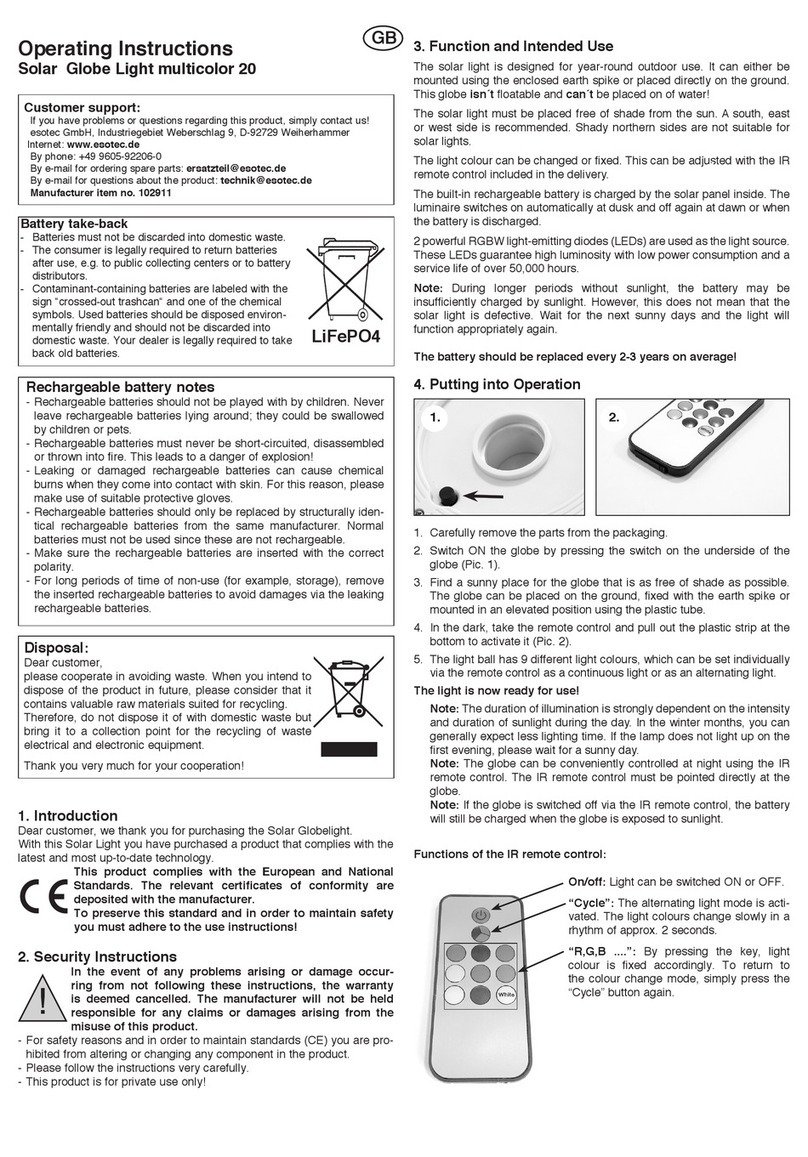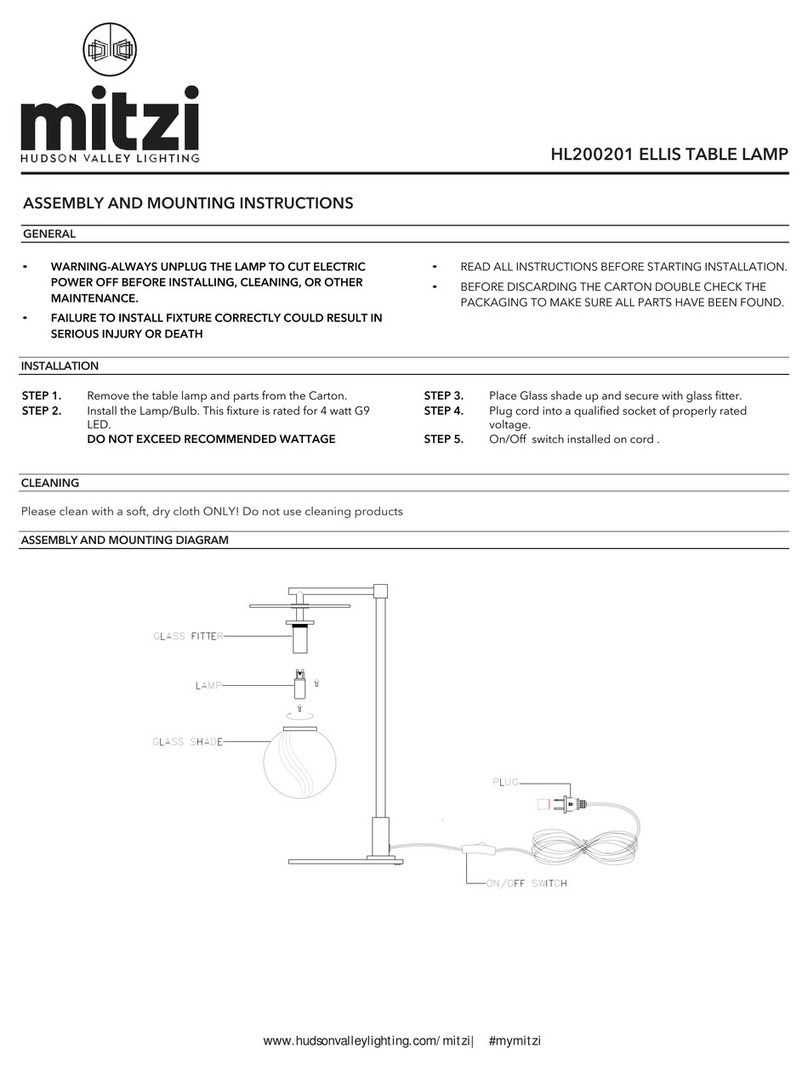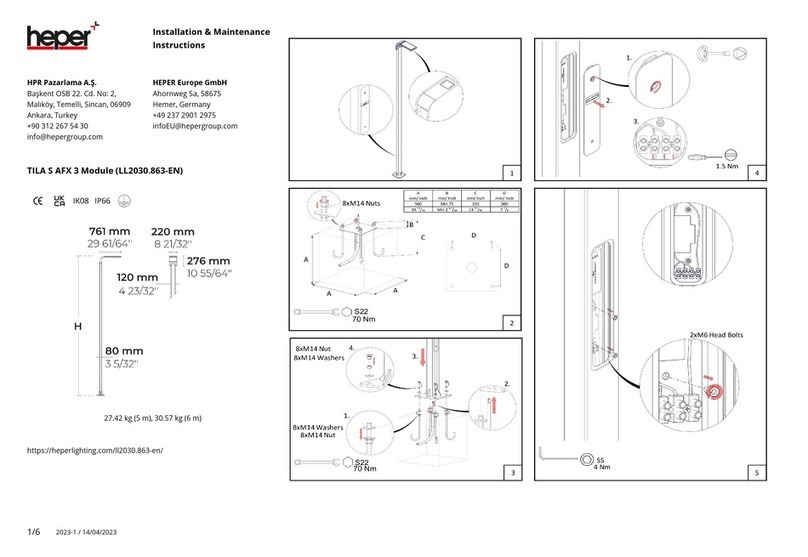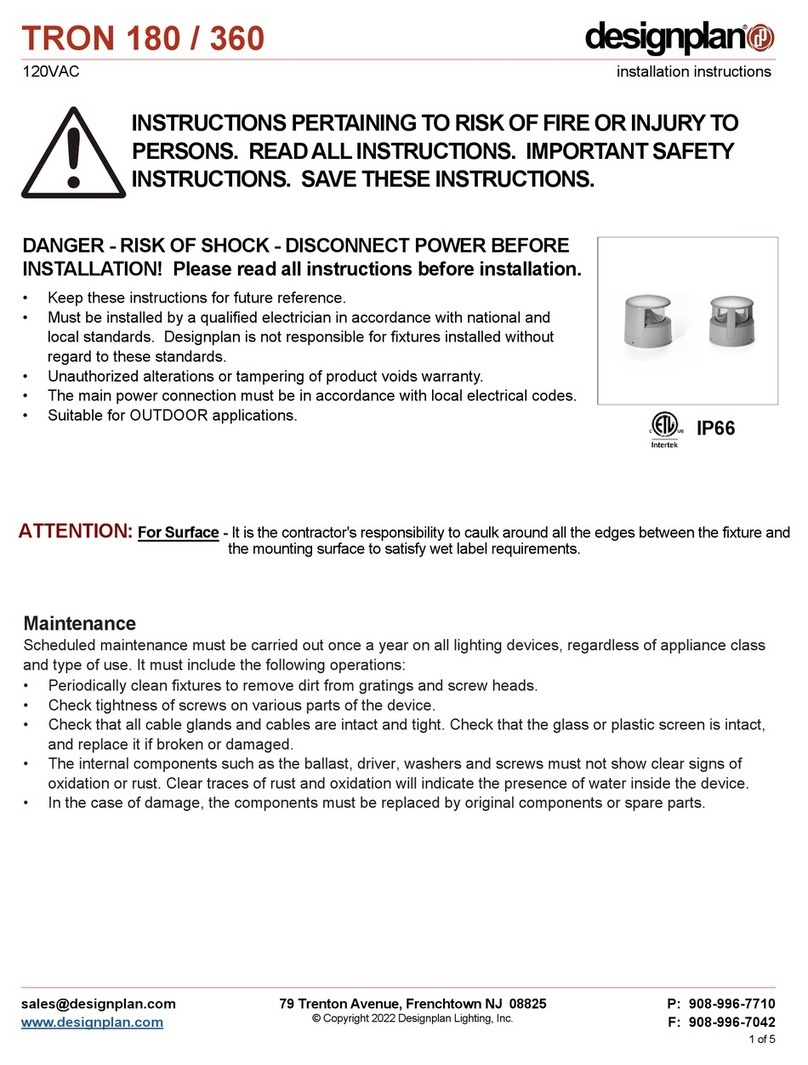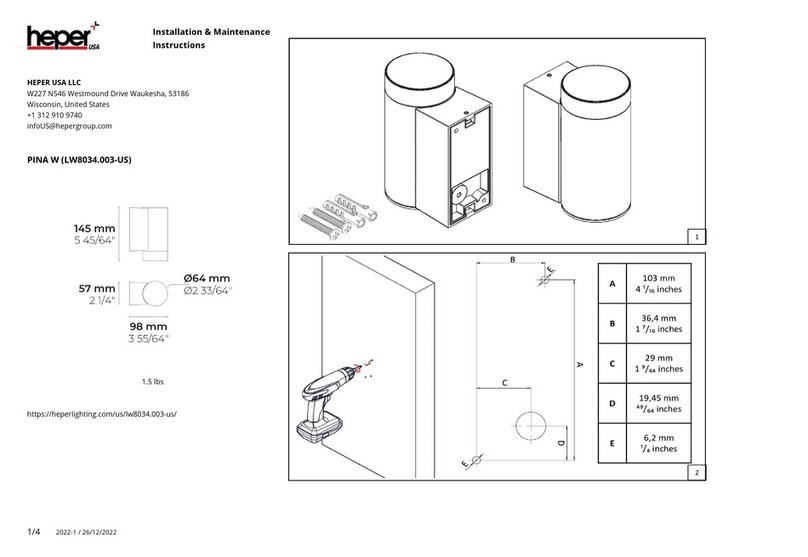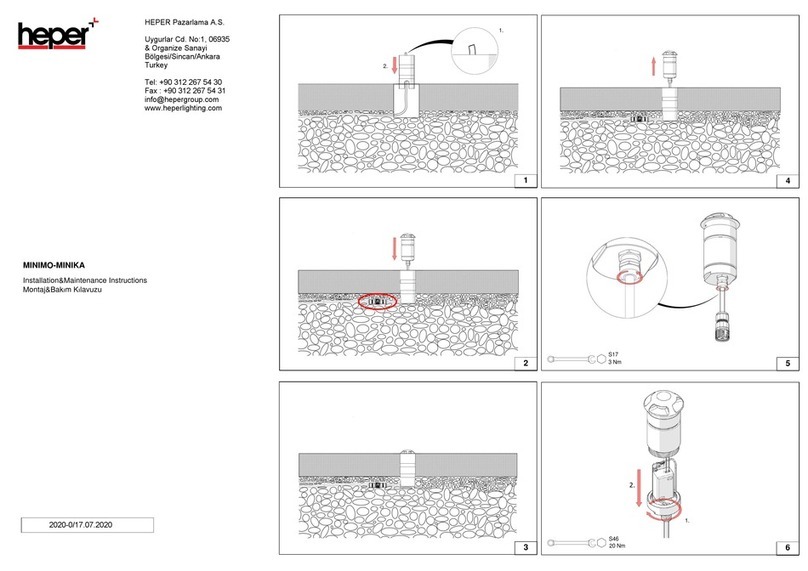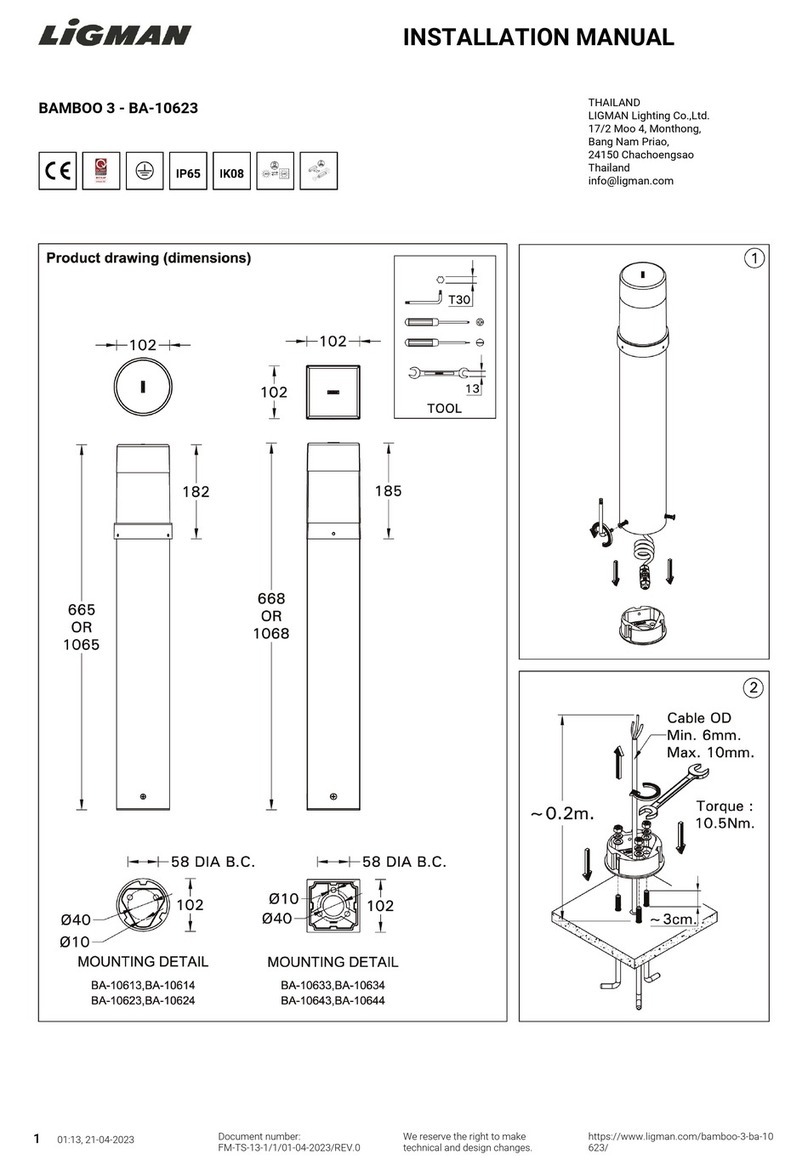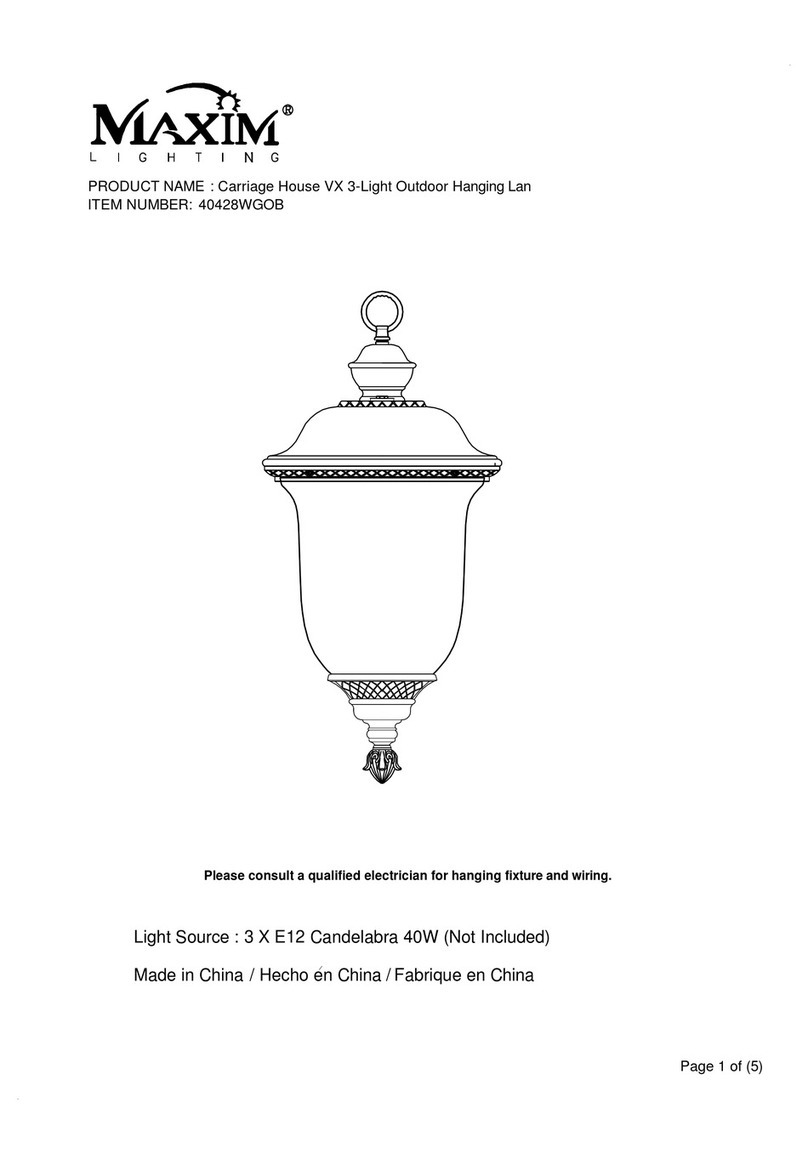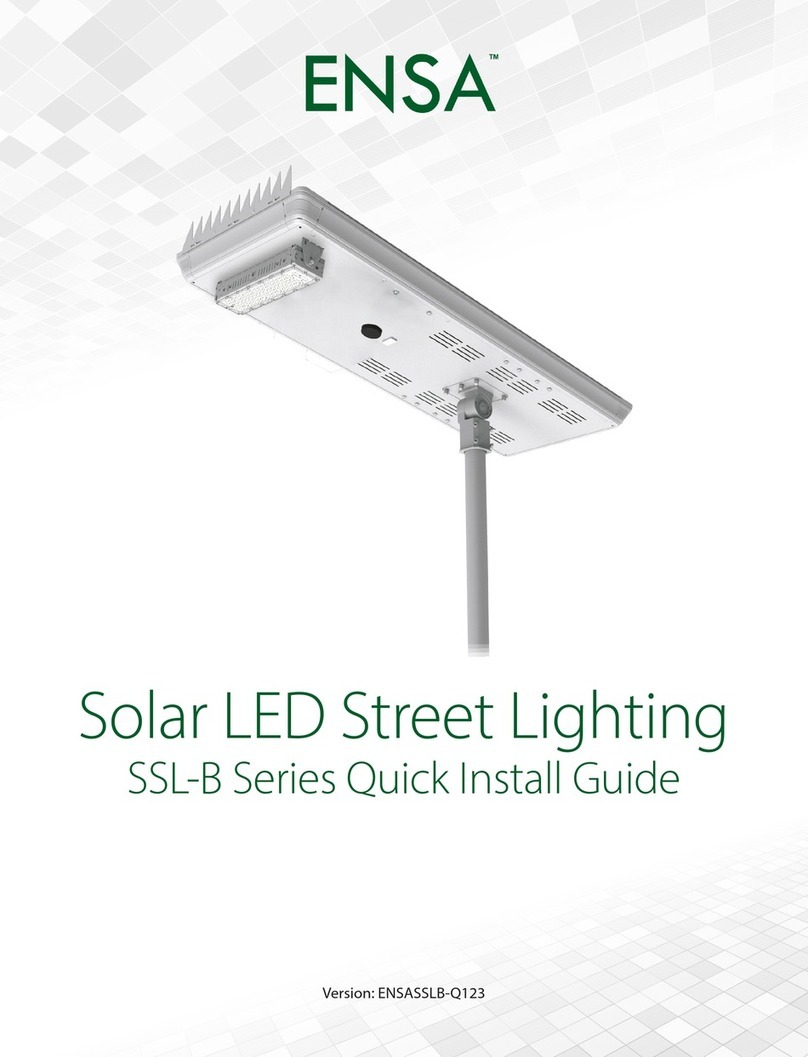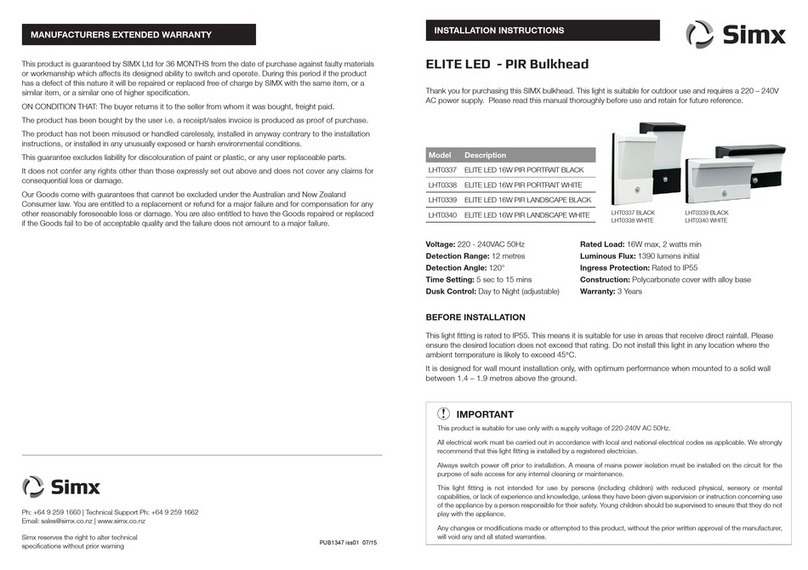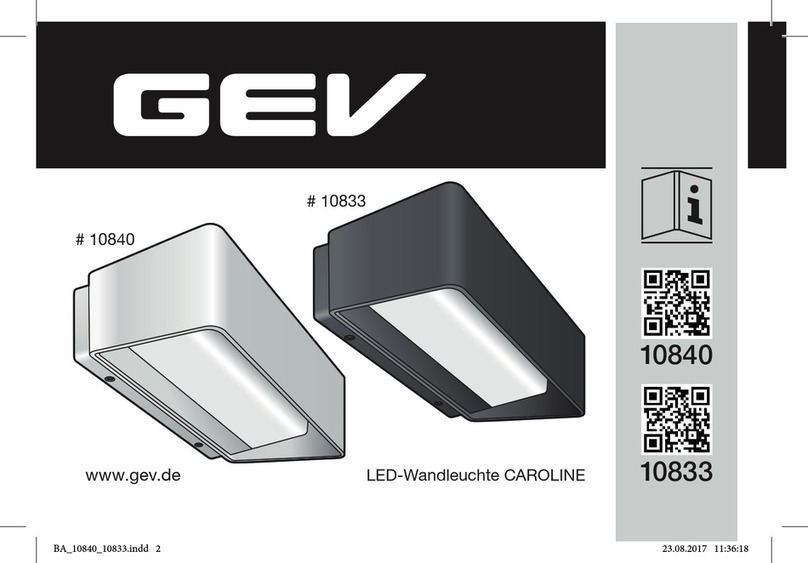
ENSA SSL-B Solar Street Light Installation Manual - Version: ENSASSLB-Q219
10
Note: Enabling the LED light and sensor will increase power consumption and reduce
battery power available for the system.
Incorrectly editing power settings can permanantly damage the solar panel, solar battery
and/or LED light. Consult ENSA for more information. Only edit power settings exactly
as outlined in this guide.
This section covers how to set up the motion-activated LED light on the solar panel. Our example
will show you how to congure your solar panel & light with the remote control, showing you the steps
required to set up the light to activate after motion is detected at night.
The solar panel’s motion-activated LED light is disabled by default. Solar panel conguration
requires the remote control (provided on request).
1. Battery Type: Type of battery installed in the solar panel (Li_Po=LiFePO4battery or Lead acid).
Warning: SSL-B50/60 uses LiFePO4battery, DO NOT change this parameter.
2. Boost Charge: Battery overcharge voltage. To protect the battery from overcharging, the battery
stops charging when it is above this voltage.
3. Voltage Low: Battery cut-off voltage. When the battery voltage falls below this value, output will
be disabled.
4. Recover Voltage: Minimum voltage for the battery to start. Battery output is enabled or resumed
from cut-off when battery voltage is above this value.
5. Power Saving: When turned on, the battery will adjust power output automatically to save energy
(On/Off).
6. Turn-On PV Voltage: The light turns on when the solar panel is below this voltage (dark). Note:
LED light turns on/off condition must meet other settings.
7. Output Current: Set the constant current output level.
8. Drive Mode:
Time Control - 5 individual intervals of maximum 9 hours each can be set to turn LED light on.
Move Sensor - Motion detect. The LED light will switch to higher intensity when it detects
movement. If no movement is detected, the intensity will be lower to save power. The intensity
can be adjusted for both settings to meet customer’s requirements.
9. Light Delay: The on-time delay after last detection motion. Suggested value: 30 seconds.
10. First/Second/Third/Fourth/Fifth Time: User-programmable light on/off schedule. Maximum 9
hours for each setting.
11. Light Ratio: Set light output (%) for when movement is detected.
12. Idle ratio: Set light output (%) for when no movement is detected.
Understanding Settings:
Before adjusting solar panel settings, familiarise yourself with the setting denitions below:
4. Solar Sensor Light Conguration (Optional)
4.1 Solar Sensor Light Introduction


